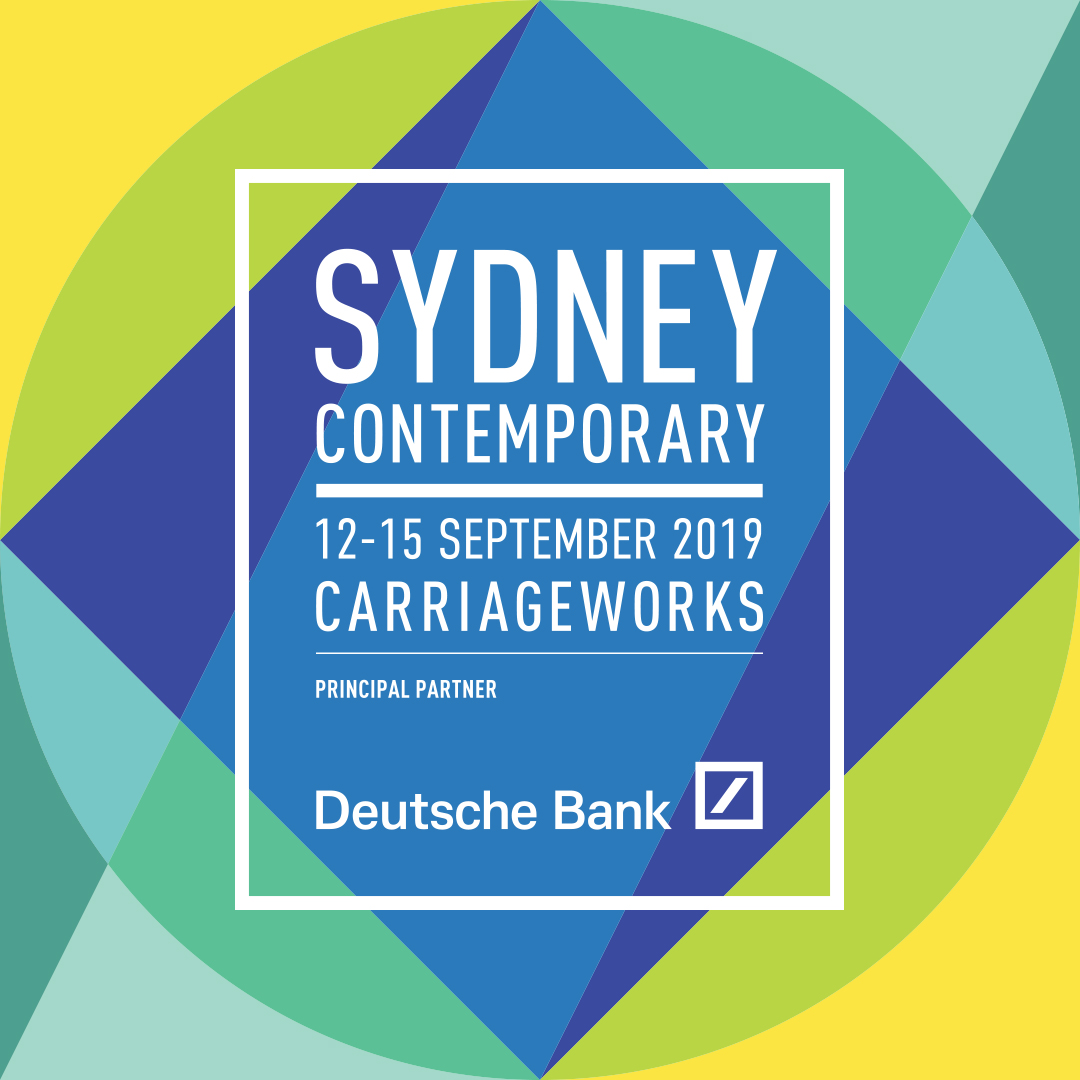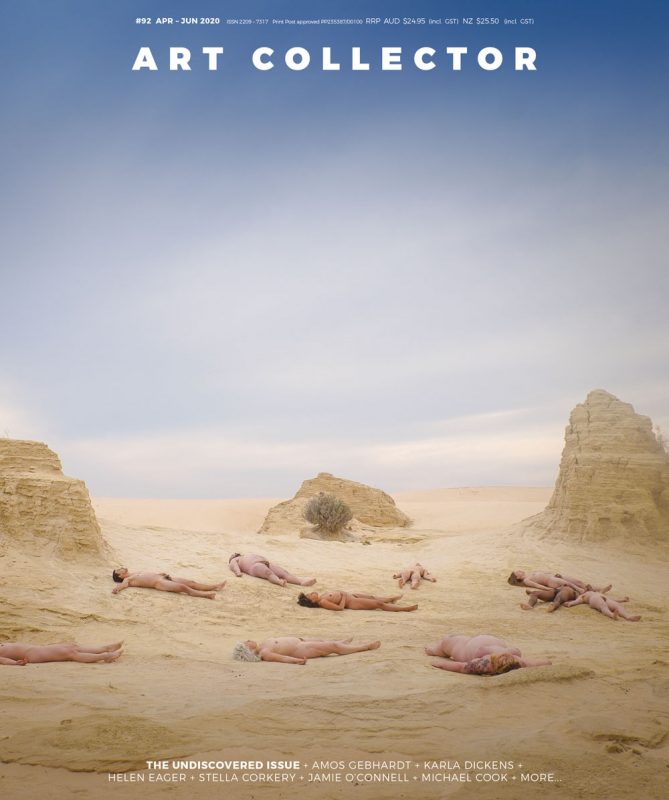Archive
April
In memory of stars
Gallery 1
Naarm/Melbourne, Australia: Tolarno Galleries is pleased to present Amos Gebhardt’s new exhibition, In memory of stars.
This exhibition expands on Gebhardt’s recent large-scale lightboxes from the same series installed along the Birrarung (Yarra River) for PHOTO 24. Notably, the work ‘Wallaby’, presented in this exhibition, also won the prestigious William and Winifred Bowness Photography Prize in 2022.
“Western cosmologists say bones are made from material traces of incredibly rare, calcium-rich supernovas, which are the explosive death and afterlife of unique stars,” says Gebhardt.
“In memory of stars contemplates lost futures created by ongoing colonial impacts in the form of native animal bones sourced from veterinary and scientific archives.”
Gebhardt’s glowing images delineate the exquisite skeletons of seven native animals killed on Wadawurrung country and oceans off the coast of Australia.
They are arrayed as seven lightboxes on one wall of Gallery 1 in a spiralling sequence of ghost-likehauntings: wallaby, speckled maskray, possum, flounder, cockatoo, moray and dragonfish.
“These works interweave X-ray technology with elements including satellite and long exposure photography of the night sky on Wadawurrung country, where the land animals were found,” says Gebhardt.
“This involved the layering of light frequencies so small they pass through skin, and others so vast they began millions of light years away.”
Gebhardt’s detail-rich lightboxes invite close inspection, revealing information not visible to the naked eye as a way to speak to colonial violences that may be deliberately hidden or erased.
“The architecture of these skeletons are visually complex and wondrous,” says Gebhardt. “While some remain intact for the purposes of scientific exploration, others reveal injuries from technologies such as lawnmowers, fish-hooks, vehicles and firearms.”
“I’m interested in the way dominant societies are haunted by that which they attempt to erase. By enhancing the luminosity of these once animated bones with elements such as fire, smoke, stars and cloud, the work suggests the entangled lines of connection between cosmology, trauma and sentience,” says Gebhardt.
Amos Gebhardt would like to thank the Wadawurrung Traditional Owners Aboriginal Corporation, the Wurundjeri Woi Wurrung Cultural Heritage Aboriginal Corporation and Dr Paola Balla for their generous time, knowledge sharing and consultation.
Thank you to Kane Wilson and the CSIRO for their support and generosity. Marine archival documents courtesy of CSIRO.
This series was supported by Arts South Australia.
Image: Amos Gebhardt Wallaby 2023, Fujitrans on backlit LED lightbox 76 cm x 95 cm x 8 cm, edition of 5.
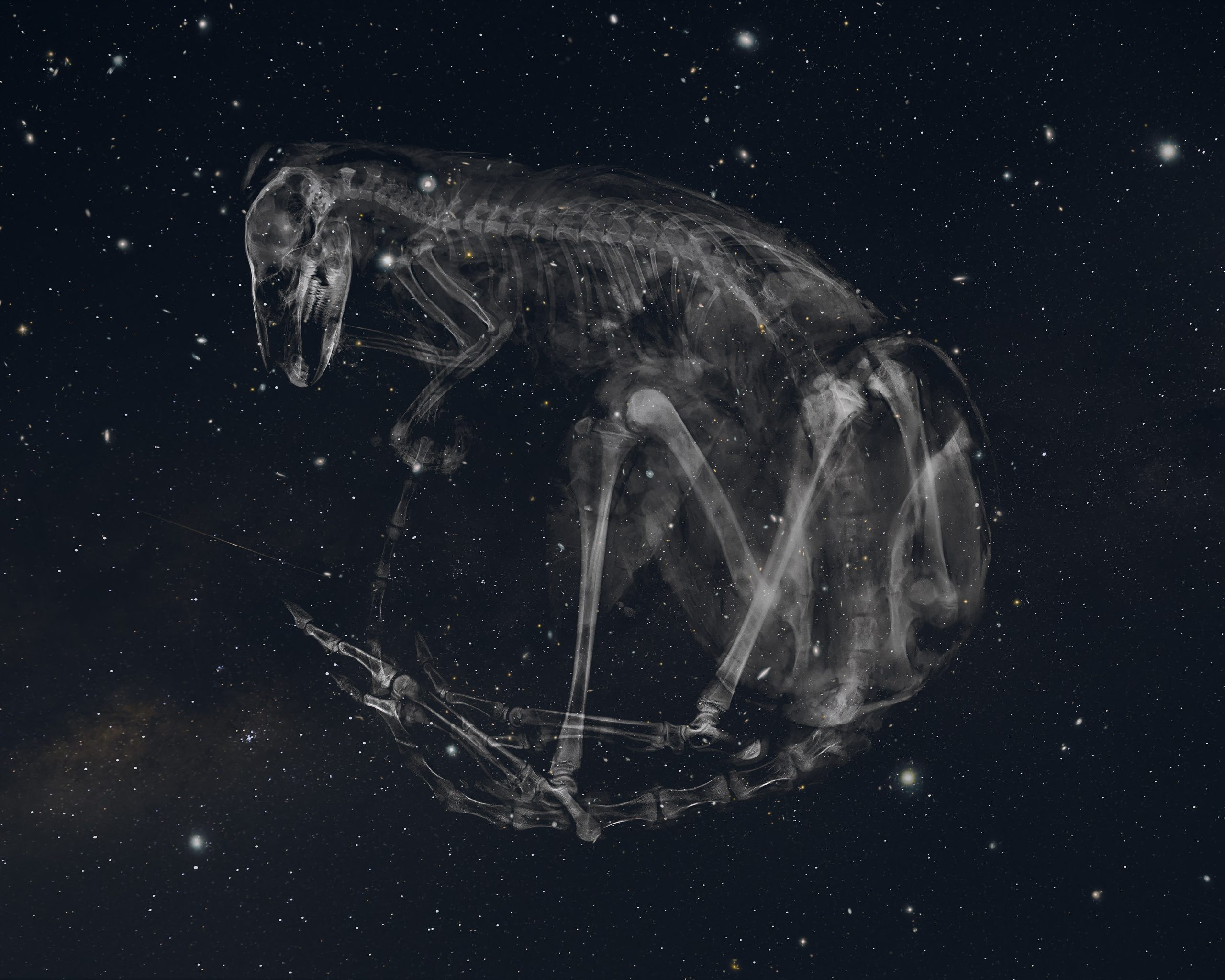
April
Night Horse
GALLERY 1
Night Horse examines the powerful currents between horses as they negotiate consent and desire during mating season. The viewer is drawn inside the kinetic swirl of the herd where hooves, flicking tails, and outstretched limbs offer an intimate encounter across the species divide. Shot in the heat of a February summer’s night, on the artist’s birthday, the charged atmosphere is palpable. Modern equine reproduction is now often a supervised insemination process, or between a mare and stallion who are performing on cue. Night Horse captures a rarely seen ritualised courtship, where the protagonists experience heightened states of being ‘for themselves’.
Gebhardt says, “The images are raw, showing the mess of body fluids and muscle, giving vivid dimensions to the physical language of the body as an archive of story, to suggest a dramatic arc in horse terms.”
The image titles – Midnight, Fetlock, Halo, Parallax, Zenith, Umbra – evoke the night, the horse, or the universe, interweaving the anatomical with the universal, the body with the stars. In observing these complex dynamics, Night Horsechallenges the dominant anthropocentric view, capturing the undeniable force of non-human narratives.
Night Horse (2019) continues themes explored in Gebhardt’s recent video installations Lovers (2018) and Evanescence(2018), both selected for the 2018 Adelaide Biennial of Australian Art, and There Are No Others (2016) presented at Gertrude Contemporary, Melbourne. They thread a trajectory of connected ideas concerning nakedness as the barest form of identity, deep time cycles of matter – life, death, decay.
In 2022 Gebhardt was winner of the William and Winifred Bowness Photography Prize, Monash Gallery of Australia, VIC and a finalist in both the National Photography Prize, Murray Albury Museum of Art, NSW and the Josephine Ulrick and Win Schubert Photography Award, HOTA, QLD. Gebhardt was the recipient of the inaugural Adelaide Studios Artist Residency 2019, presented by the South Australian Film Corporation. The resulting moving image work, Small acts of resistancepremiered at Samstag Museum of Art and the Adelaide Film Festival 2020. Gebhardt’s video installations Lovers and Evanescence, were both selected for the 2018 Adelaide Biennial of Australian Art, and There Are No Others 2016 premiered at Gertrude Contemporary, Melbourne.
A Sidney Myer Creative Fellow and Masters graduate of AFTRS, Gebhardt has exhibited at M+ Museum, Hong Kong; ACMI, Melbourne; MONA, Hobart; Monash Gallery of Art, Melbourne, Carriageworks, Sydney, Melbourne International and Sydney Film Festivals and screened on SBS and ABC. Gebhardt created visuals for Kate Miller-Heidke’s 2016 Helpmann Award-winning concert with the Tasmanian Symphony Orchestra at Hobart’s MOFO Festival. Gebhardt directed Second Unit on Justin Kurzel’s Macbeth (2015), premiering in competition at Cannes Film Festival.
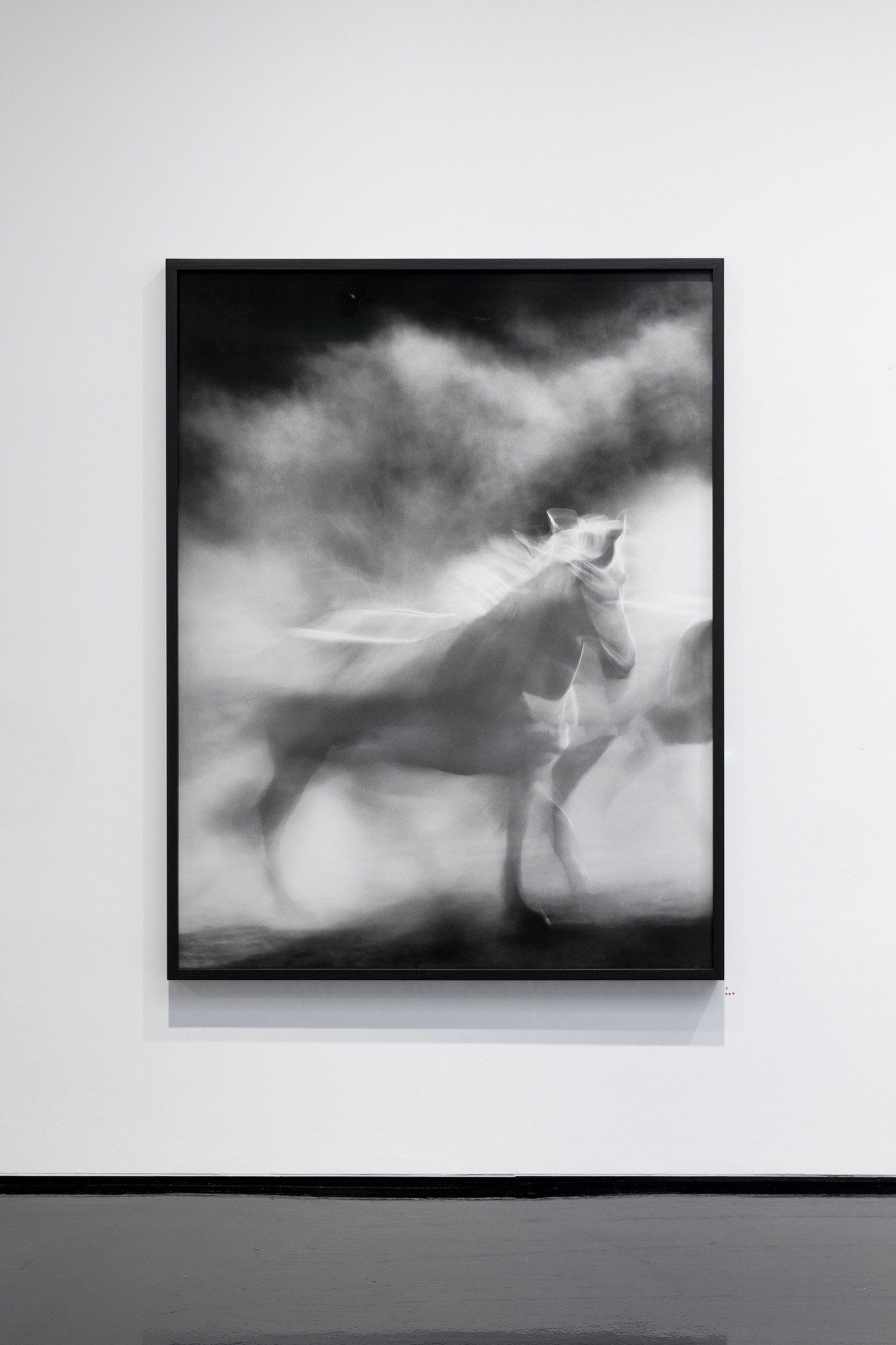
August
Night Horse
Night Horse examines the powerful currents between horses as they negotiate consent and desire during mating season. The viewer is drawn inside the kinetic swirl of the herd where hooves, flicking tails, and outstretched limbs offer an intimate encounter across the species divide. Shot in the heat of a February summer’s night, on the artist’s birthday, the charged atmosphere is palpable.
Modern equine reproduction is now often a supervised insemination process, or between a mare and stallion who are performing on cue. Night Horse captures a rarely seen ritualised courtship, where the protagonists experience heightened states of being ‘for themselves’. Gebhardt says, “The images are raw, showing the mess of body fluids and muscle, giving vivid dimensions to the physical language of the body as an archive of story, to suggest a dramatic arc in horse terms.”
Image: AMOS GEBHARDT Crest 2019, archival inkjet pigment print, 122 x 163 cm, edition of 5 + 2 AP
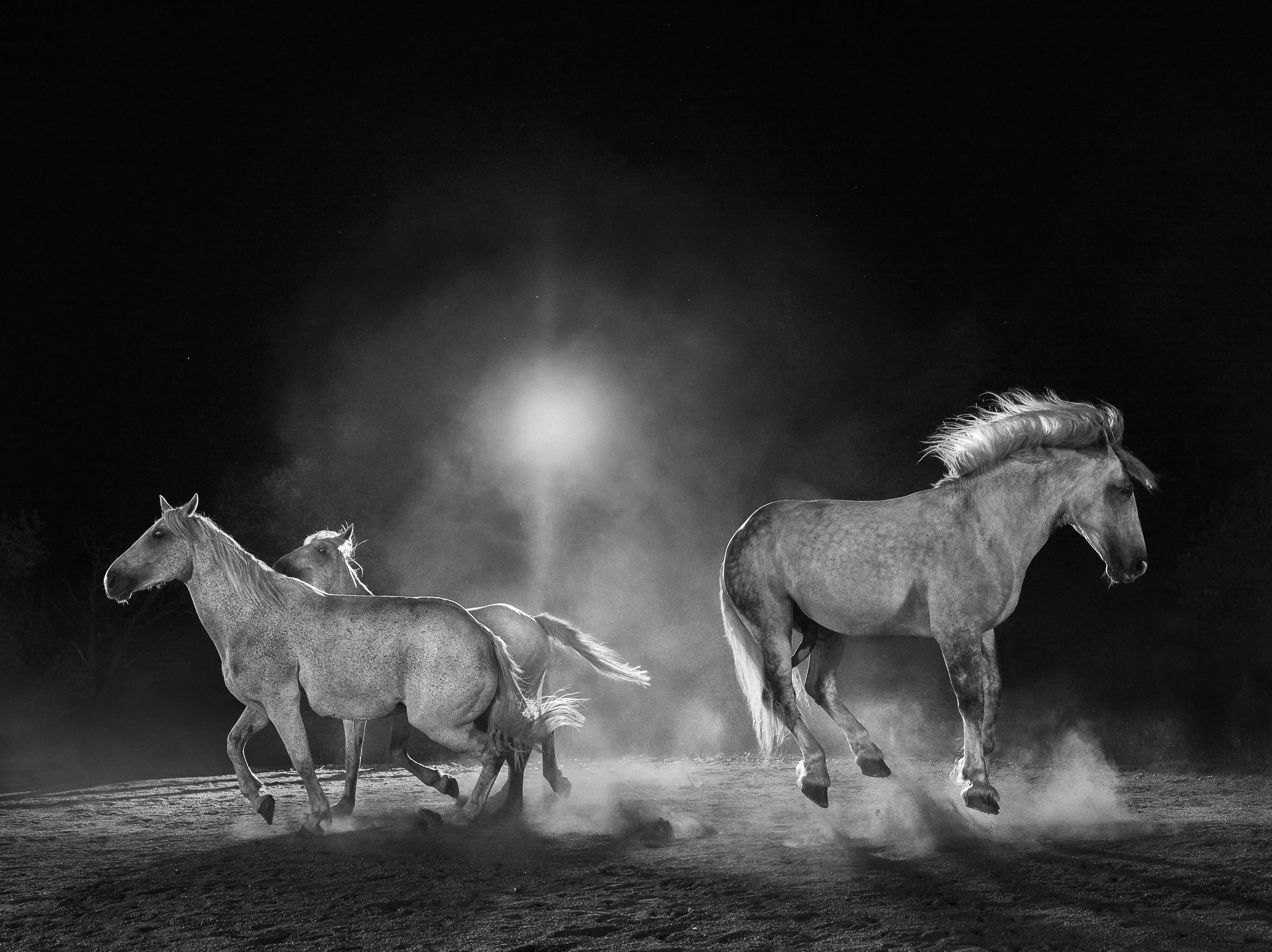
April
Evanescence
An online feature dedicated to the Amos Gebhardt video Evanescence (2018), and the related photography series.
Scheduled to coincide with the Art Collector magazine issue #92 cover story, April – June 2020.
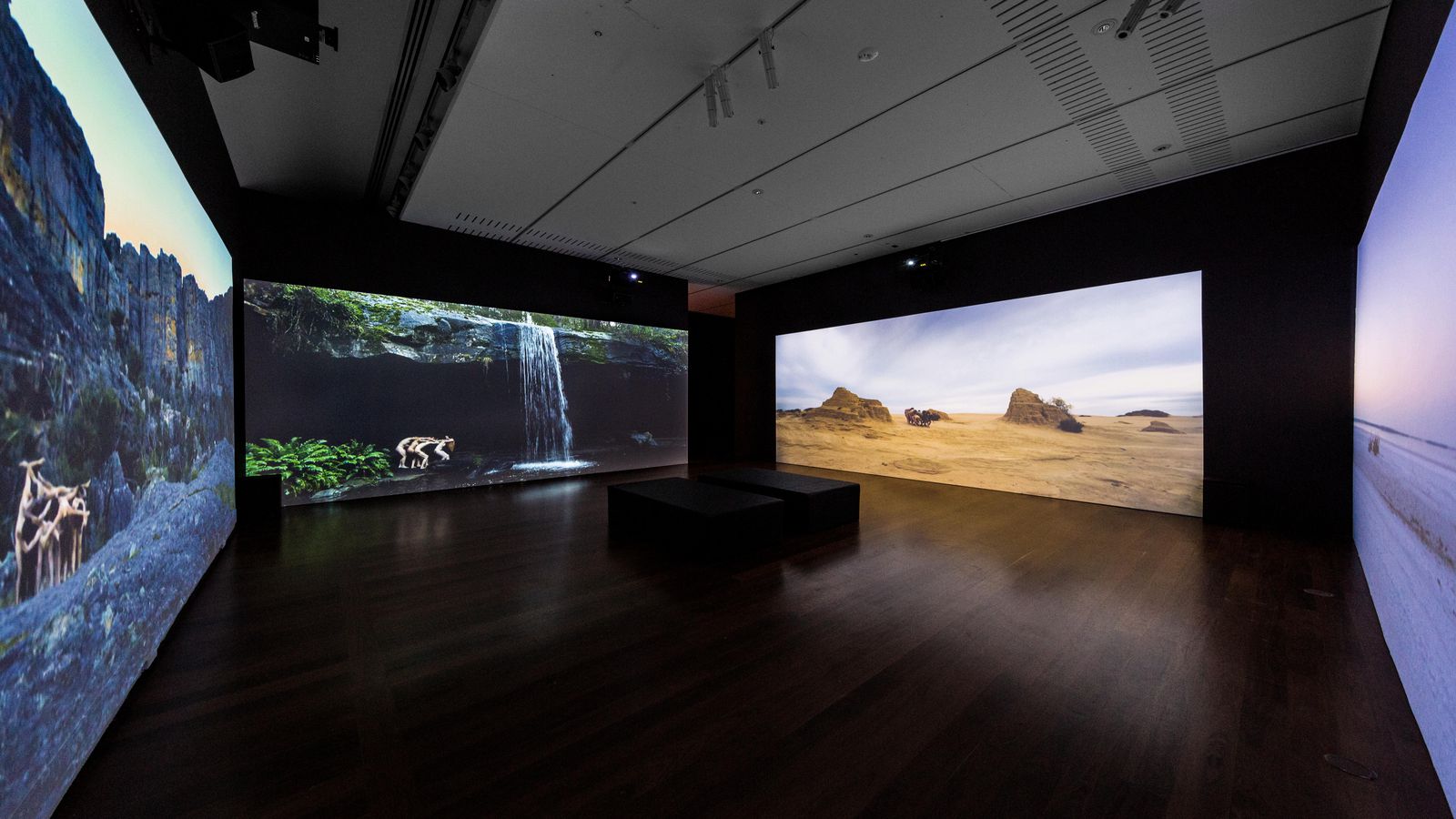
July
Sydney Contemporary
Tolarno Galleries presents Amos Gebhardt‘s Night Horse at Sydney Contemporary art fair, Carriageworks, 12 – 15 September 2019.
Amos Gebhardt is an artist whose works have a cinematic scale, challenging normative notions of humanness by examining intersections between culture, nature and the body. Gebhardt maps both human and non-human narratives using techniques of collage, dance, slow motion and time lapse to frame large scale, multi-screen video installations and photographs.
The new photography series Night Horse examines the powerful currents between horses as they negotiate consent and desire during mating season. The work places the viewer inside the kinetic swirl of the herd where hooves, flicking tails, and outstretched limbs offer an intimate encounter across the species divide. The horses move from solid, muscular shapes to traces of light that merge with the dusty atmosphere. The photographs thus progress towards a presence beyond the body, to a thinness of form that suggests the ephemeral nature of being.
Amos Gebhardt will also present a lecture as part of the Writing and Concepts series, 4.30pm Sunday 15 September as part of Talks Contemporary at Carriageworks.
